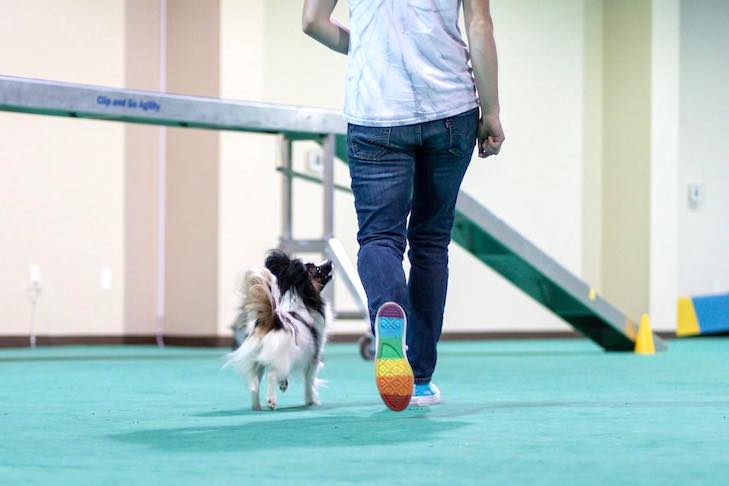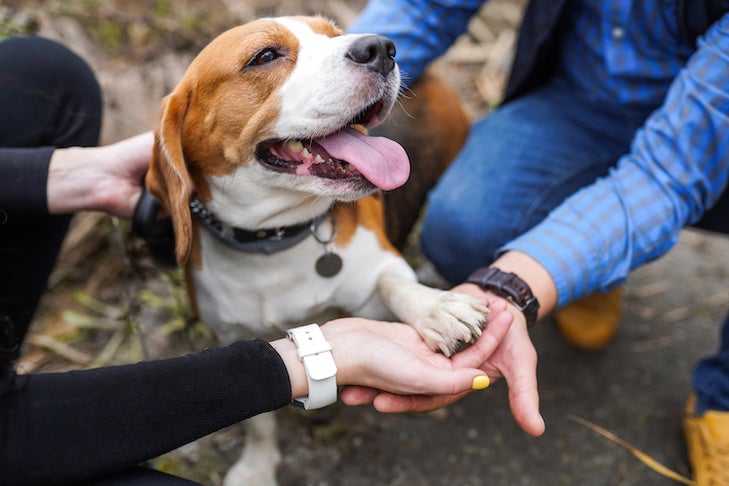Thoughtfulness and inclusivity within our language and club policies are important, even at dog events. This includes being thoughtful and inclusive to Lesbian, Gay, Bisexual, Transgender, and Queer (LGBTQIA+) dog owners involved in AKC sports and events. Any time of year is a great opportunity to think about ways to make our clubs, classes, shows, and events more welcoming and safe for LGBTQIA+ community members, from joining as spectators to participating with their dogs.
The Person on the Other End of the Leash
When we start discussing diversity and inclusion in a dog-centered space, “I don’t care about people. I’m just here for the dogs” is a common phrase that comes up. Regardless of breed or sport, what brings us all together are the dogs. However, it’s equally important to recognize the importance of being inclusive and welcoming to the people handling those dogs.
Dogs are a very diverse species, and so are people! All dog owners should feel like they can show up to shows while being their full and authentic selves. They shouldn’t have to hide their gender identity or sexual orientation for fear of being shunned or discriminated against.
Building More Inclusive Sports
Next time you’re at a club meeting or show, look around the room. Does everyone look like you? If the answer is yes, it can be important to think about why that might be. Are there things that you and your club can do to be more welcoming to people of color, LGBTQIA+ people, and people with disabilities? LGBTQIA+ people have always been involved in AKC dog events, but there are ways that we can be more sensitive and welcoming to welcome more of that community into the dog world.
To encourage a more diverse membership and participation, try to be more involved in your local community or add nondiscrimination statements to your club policies. Consider making your club’s logo rainbow-colored on social media in honor of Pride Month, and make it clear that discriminatory language isn’t permitted in your group’s online forums and social media groups.

If your club offers handling classes, encourage those in attendance to wear clothes that complement their dog, but don’t focus on the specifics of what they should or shouldn’t wear because of gender. For example, women don’t have to wear dresses or skirts in the show ring. Seeing this kind of inclusive behavior from dog clubs can make LGBTQIA+ dog owners of all ages feel safer, more welcome, and included.
Be a Welcoming Ally
Many LGBTQIA+ people have found the dog world to be a haven where they feel safe and supported. However, others have felt ostracized unless they hide who they are. If you’re involved in your club, work with your board to add nondiscrimination policies, and consider removing gendered language from forms and documents. These are small ways that we can signify to LGBTQIA+ people that your club values the diversity of members.
If you see someone new, introduce yourself! Normalize doing things like asking for someone’s pronouns when you meet new people, and don’t assume if someone says they are married, that you know the gender of their spouse. Many dog owners are also considering which states they feel safe to travel to for shows and other events – ask how you can support them!

If you see someone acting rudely to someone, speak up! You might feel uncomfortable, but it’s part of good sportspersonship. It shouldn’t always be the marginalized person who should have to call out discrimination. By being someone who speaks up for equality, you’re showing LGBTQIA+ people attending your events that you’re a safe person to sit next to at a show or take a class from.
Taking that extra step to show someone you care about the person on the other end of the leash might just change someone’s life for the better, and you might meet a new friend!

